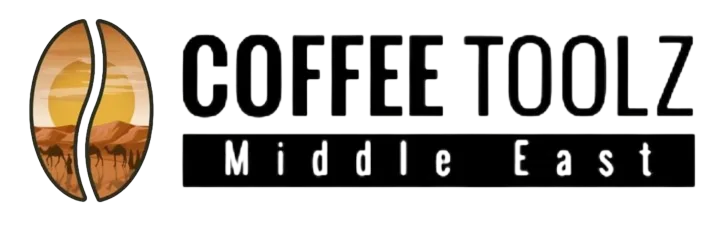How Climate Shifts Shaped Human Innovation — The Case of THE GREAT PLAINS
Introduction: Climate as a Catalyst for Human Innovation
a. For millennia, climate shifts have acted as powerful drivers of societal transformation, compelling communities to innovate or perish. From the drying of ancient lakes to erratic monsoons, environmental pressures repeatedly sparked breakthroughs in survival strategies.
b. Historically, periods of climatic stress—such as prolonged droughts or temperature fluctuations—triggered cycles of adaptation, where necessity became the mother of invention.
c. THE GREAT PLAINS exemplify this dynamic interplay: a vast, climate-vulnerable region where humans developed resilient technologies in response to recurring environmental extremes, turning adversity into enduring innovation.
Why THE GREAT PLAINS exemplifies climate-driven innovation
THE GREAT PLAINS spans a semi-arid expanse shaped by shifting precipitation patterns and extreme temperature swings. These forces demanded adaptive solutions that not only ensured survival but reshaped social and technological trajectories.
Theoretical Framework: Climate Pressures and Technological Response
a. Environmental stress acts as a powerful trigger for innovation cycles, compelling communities to rethink resource use and infrastructure.
b. Resource scarcity—especially water and arable land—often forces the emergence of novel technologies, from water conservation methods to crop diversification.
c. Geographic and climatic context uniquely shape adaptations: in THE GREAT PLAINS, open grasslands and variable rainfall fostered mobility, communal knowledge networks, and innovations tuned to seasonal extremes.
THE GREAT PLAINS in Historical Context: A Case Study in Climate-Driven Innovation
a. Timeline: Starting ~2000 BCE, the region experienced alternating wet and dry phases, with severe droughts intensifying around 1200 CE and 1500 CE. The Little Ice Age (1300–1850 CE) brought colder temperatures and reduced growing seasons, further stressing indigenous and settler populations.
b. Early challenges included prolonged droughts, sudden floods, and extreme temperature swings that disrupted hunting and early agriculture.
c. These pressures catalyzed key innovations: seasonal camp mobility, communal water storage, and the development of drought-resistant crops like certain maize varieties adopted by Plains tribes.
Technological Innovations Born from Climate Adaptation
– **Mobility and Portable Architecture**: The tipi, engineered for rapid assembly and insulation, reflected adaptation to variable weather and nomadic lifestyles.
– **Water Management Systems**: Earthen reservoirs and strategic site selection minimized drought risk.
– **Agricultural Practices**: Intercropping maize, beans, and squash (Three Sisters) improved soil fertility and resilience to moisture variability.
These innovations were rooted in deep ecological knowledge and responsive engineering.
Cultural and Societal Impacts of Climate-Informed Innovation
a. Social organization evolved around shared resource management—communal hunting, cooperative farming, and seasonal gatherings strengthened community resilience.
b. Trade networks expanded as tribes exchanged drought-adapted crops, tools, and knowledge, fostering regional interdependence.
c. THE GREAT PLAINS’ innovations influenced broader North American agricultural and settlement practices, particularly during European migration when adaptive techniques were adopted and scaled.
Non-Obvious Insights: Unintended Consequences and Long-Term Effects
a. Innovations like water storage and drought-resistant crops reduced migration frequency but also encouraged settlement in marginal zones, later vulnerable to extreme weather events.
b. Some adaptations inadvertently intensified land use, accelerating ecological shifts—early overharvesting of certain plant species, for example—offering cautionary lessons on sustainability.
c. The enduring legacy lies in demonstrating how climate stress drives both resilience and risk: a model relevant to today’s climate challenges.
Conclusion: Lessons from THE GREAT PLAINS for Future Climate Resilience
a. The region’s history underscores the enduring relevance of adaptive innovation—solutions born from environmental pressure remain vital.
b. Modern climate adaptation can learn from the emphasis on flexibility, community collaboration, and ecological attunement seen in Plains innovations.
c. THE GREAT PLAINS stands as a vital example: where climate shaped invention, resilience emerged not in spite of adversity, but because of it—reminding us that human ingenuity thrives when challenged.
“Innovation is not the enemy of stability—it is its response.” – A timeless insight mirrored in THE GREAT PLAINS, where climate shaped invention, and invention secured survival.
Table of Contents
1. Introduction: Climate as a Catalyst for Human Innovation
2. Theoretical Framework: Climate Pressures and Technological Response
3. THE GREAT PLAINS in Historical Context: A Case Study in Climate-Driven Innovation
4. Technological Innovations Born from Climate Adaptation
5. Cultural and Societal Impacts of Climate-Informed Innovation
6. Non-Obvious Insights: Unintended Consequences and Long-Term Effects
7. Conclusion: Lessons from THE GREAT PLAINS for Future Climate Resilience

